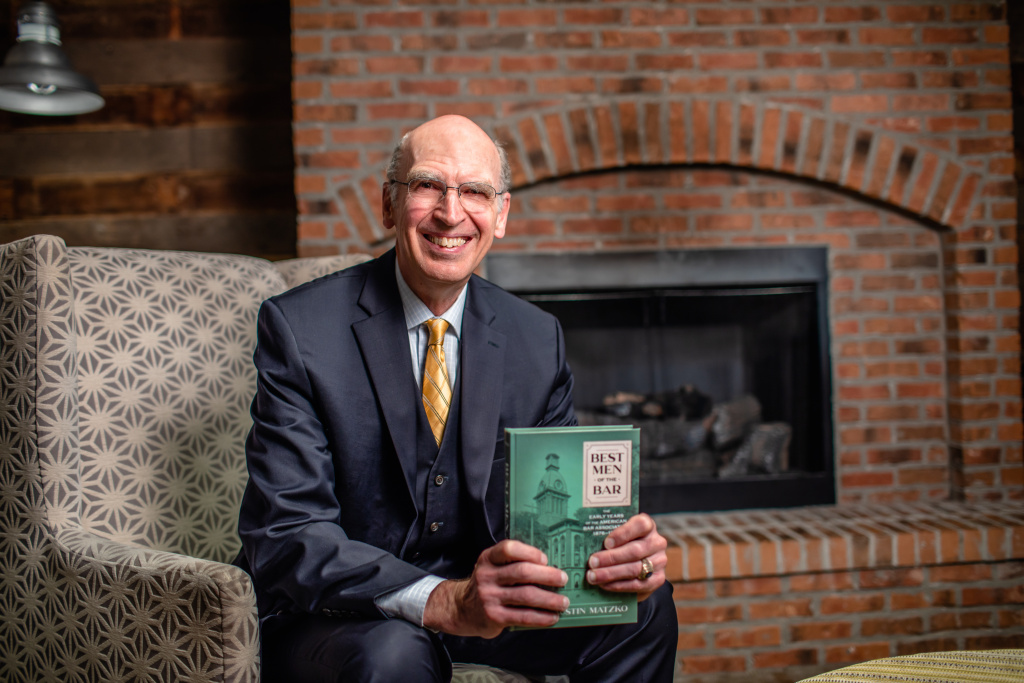John Matzko’s book, Best Men of the Bar: The Early Years of the American Bar Association, 1878–1928, entered the market in July. Michael Hoeflich of the University of Kansas School of Law wrote, “The history of the ABA provides a number of rich tales that every lawyer, law student, and would-be lawyer should read and savor.” However, the story behind the book has its own appeal.
Taking on Mission Improbable
Unlike his works Reconstructing Fort Union (2001) and a scholarly biography of Dr. Bob Jones Sr. (currently being revised), Best Men of the Bar was an academic paper—his dissertation, to be exact.
When it came time to choose his dissertation topic, Matzko focused on his field of specialization—American legal history. And because he enjoyed the challenge of a minimally investigated topic, Matzko chose to write about the early years of the American Bar Association. It was a broad topic, but he knew the law library at the University of Virginia had plenty of ABA Reports.
That decision, however, backfired. He was prepared to invest in the research, but he soon found that the early ABA was also minimally recorded. “The ABA had kept virtually none of its files before 1928,” Matzko said. “(I had to hunt down) papers of influential ABA leaders (that) were archived in repositories all over the country.”
He encountered another hurdle: accessing these papers. These were the ‘70s—no personal computers, no printers, no scanners. Not to mention, long-distance calls were not kind to bank accounts. Matzko had to request sources by mail, pay for microfilmed records or go to libraries themselves. And when he was at the libraries, there were no electronic catalogs to easily locate useful sources. Matzko said, “Sometimes (I) walked library stacks hoping to run into important books through sheer serendipity.”
Writing Through More Challenges
Without computers, writing the dissertation also had challenges. Unable to digitally copy or record information, Matzko handwrote facts on 4×6 cards. And not saved digitally, a lost card became permanently lost information. The chapter drafts—written on his portable typewriter—were at risk as well, so Matzko made carbon and yellow second sheet copies for those. Additionally, without a computer’s ability to easily fix a typo, writing new drafts required a full retype every time.
After 10 years of intermittent research and writing—beginning with a paper for a graduate class in 1974—Matzko completed and defended his dissertation. All 700 pages of it.
Revising for Publication
In 2017, Talbot Publishing—a publisher specializing in legal history—offered to publish Matzko’s dissertation if he would revise it. It was a significant offer. Matzko explained, “The odds of publishing a revised version of a 35-year-old doctoral dissertation (are) pretty slim. After all those years, someone else is likely to have traveled beyond your research; or even more likely, the profession considers your thesis old-fashioned.”
With such a rare opportunity available, of course Matzko agreed. And this time around, writing was much more convenient. With the internet and BJU’s Mack Library catalog, he was able to research without leaving his desk.
The result was one-of-a-kind account which—according to William E. Butler of Dickinson Law—is “likely to be the definitive account (of early ABA history) for some time to come.”
See Also: Dr. John Matzko Publishes “Best Men of the Bar”
Matzko teaches Historical Research & Writing (Hi 440), the course where students earning a bachelor of arts in history prepare their capstone projects.








